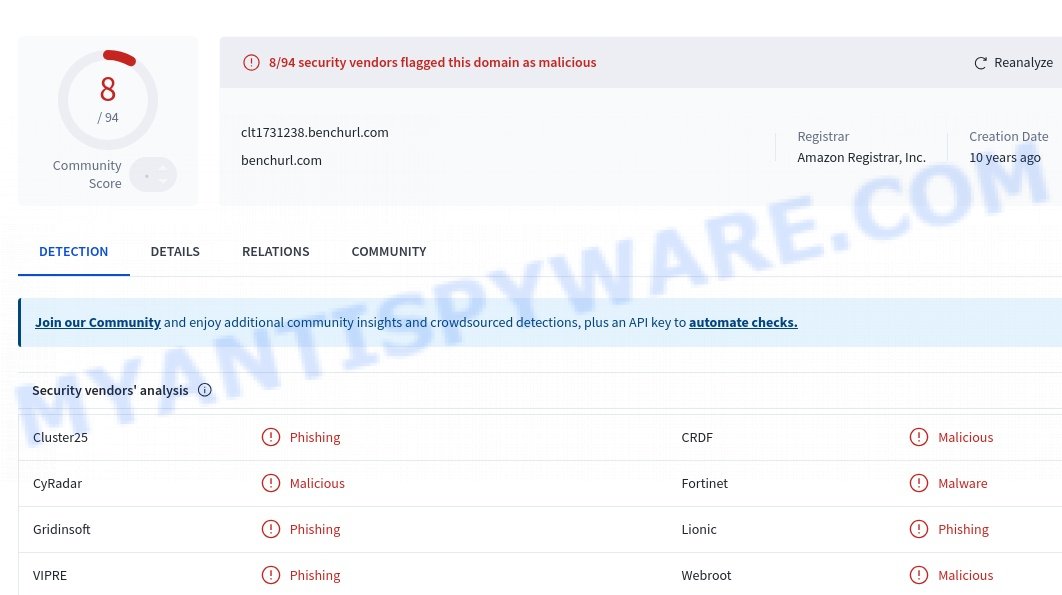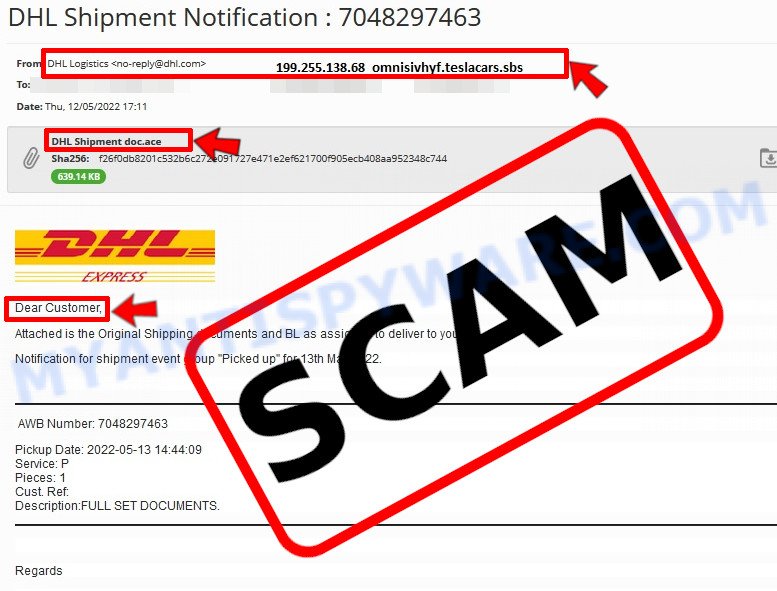Have you received an email seemingly from DocuSign with a subject like “Signature Request for Payment and Settlement Agreement TDX-xxxxxxxx”? It asks you to review and sign a document through a link provided within the email.

Question: Is this email and the link provided a legitimate DocuSign request?
Investigation Findings: The email prompts you to click on a link that redirects to a webpage (clt1731238.benchurl.com), which has been flagged by VirusTotal as phishing and malicious. This indicates that it is not a safe or legitimate request.

Answer: DocuSign Signature Request for Payment is a fraudulent email designed to steal your information. 💡 To protect yourself from scams like this, never click on links from emails when you’re unsure of the sender’s authenticity. Always verify directly with the company through their official website or customer support. Additionally, keep your antivirus and anti-phishing software updated to help flag such malicious attempts.
A typical “DocuSign Signature Request for Payment” scam email reads as follows:
Subject: Signature Request for Payment and Settlement Agreement TDX-xxxxxxxx.
DocuSign_zjp
Review your document.
Review and Sign
Signing digital documents is safe, secure and will simply take a few minutes of your time.This is an electronically created notice. This particular letter keeps a secure details. Please do not show this email to other people.
Other Signing Method
Please visit Our webpage, just click ‘Files’, enter in the code delivered in your document.About Docusign
Sign Paperwork and Bills in just very few steps. It is safe. Whether or not you are at work, at your home — Our service provides a pro option for Online Operations.Got questions?
In case you need to modify your document or have questions, contact the sender directly.If you are unable to see your document, visit Support for the Signing webpage.
Sign your file
You’ve been provided a file for electronic signature.
Summary Table
| Name | DocuSign Signature Request for Payment Email Scam |
| Type | Email Phishing Scam |
| Sender | DocuSign Updates (Fake) |
| Subject | Signature Request for Payment and Settlement Agreement |
| Link | hxxps://clt1731238.benchurl.com/c/l?u=… (Malicious) |
| Detected by | VirusTotal |
📧 What to Do When You Receive the “DocuSign Signature Request for Payment” Scam Email
We advise everyone who receives this email to follow the simple steps below to protect yourself from potential scams:
- ❌ Do not believe this email.
- 🔒 NEVER share your personal information and login credentials.
- 📎 Do not open unverified email attachments.
- 🚫 If there’s a link in the scam email, do not click it.
- 🔍 Do not enter your login credentials before examining the URL.
- 📣 Report the scam email to the FTC at www.ftc.gov.
If you accidentally click a phishing link or button in the “DocuSign Signature Request for Payment” Email, suspect that your computer is infected with malware, or simply want to scan your computer for threats, use one of the free malware removal tools. Additionally, consider taking the following steps:
- 🔑 Change your passwords: Update passwords for your email, banking, and other important accounts.
- 🛡️ Enable two-factor authentication (2FA): Add an extra layer of security to your accounts.
- 📞 Contact your financial institutions: Inform them of any suspicious activity.
- 🔄 Monitor your accounts: Keep an eye on your bank statements and credit reports for any unusual activity.
🔍 How to Spot a Phishing Email
Phishing emails often share common characteristics; they are designed to trick victims into clicking on a phishing link or opening a malicious attachment. By recognizing these signs, you can detect phishing emails and prevent identity theft:

💡 Here Are Some Ways to Recognize a Phishing Email
- ✉️ Inconsistencies in Email Addresses: The most obvious way to spot a scam email is by finding inconsistencies in email addresses and domain names. If the email claims to be from a reputable company, like Amazon or PayPal, but is sent from a public email domain such as “gmail.com”, it’s probably a scam.
- 🔠 Misspelled Domain Names: Look carefully for any subtle misspellings in the domain name, such as “arnazon.com” where the “m” is replaced by “rn,” or “paypa1.com,” where the “l” is replaced by “1.” These are common tricks used by scammers.
- 👋 Generic Greetings: If the email starts with a generic “Dear Customer”, “Dear Sir”, or “Dear Madam”, it may not be from your actual shopping site or bank.
- 🔗 Suspicious Links: If you suspect an email may be a scam, do not click on any links. Instead, hover over the link without clicking to see the actual URL in a small popup. This works for both image links and text links.
- 📎 Unexpected Attachments: Email attachments should always be verified before opening. Scan any attachments for viruses, especially if they have unfamiliar extensions or are commonly associated with malware (e.g., .zip, .exe, .scr).
- ⏰ Sense of Urgency: Creating a false sense of urgency is a common tactic in phishing emails. Be wary of emails that claim you must act immediately by calling, opening an attachment, or clicking a link.
- 📝 Spelling and Grammar Errors: Many phishing emails contain spelling mistakes or grammatical errors. Professional companies usually proofread their communications carefully.
- 🔒 Requests for Sensitive Information: Legitimate organizations typically do not ask for sensitive information (like passwords or Social Security numbers) via email.
✅ Conclusion
We hope this article has helped you understand more about the “DocuSign Signature Request for Payment” Scam Email and how to avoid falling victim to scammers. If you have received a phishing email that is similar but not identical to the example above, please post it in the comments section of this article. This helps us warn other users about potential scams and improve our resources to protect you better. Stay safe and vigilant! 🛡️
















